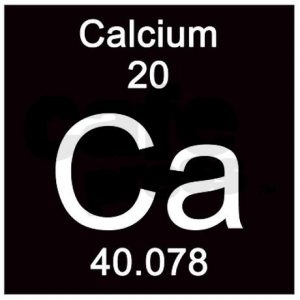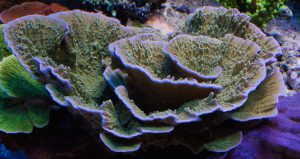This short article is dedicated to the calcium, an element every aquarist knows but often superficially or with some inaccuracy. Calcium is a metal and is one of the most abundant elements in nature, fundamental in all biological process, from bacteria to human being. In natural marine water calcium concentration fluctuates from 400 to 600 mg/l depending on the geographical zone, while in our tanks values should be maintained between 400-450 mg/l avoiding peaks under 350.
 Omitting the role of calcium in cellular processes, we are interested in analyze its role in the coral growth. Scleractinia or stony corals adsorb calcium from water, depositing it in their skeletal matrix, in the form of stable calcium carbonate.
Omitting the role of calcium in cellular processes, we are interested in analyze its role in the coral growth. Scleractinia or stony corals adsorb calcium from water, depositing it in their skeletal matrix, in the form of stable calcium carbonate.
In is clear that calcium must be maintained as stable as possible in order to keep corals healty and support their constant growth. The main system for dispensing calcium and carbonates is the calcium reactor, an extremely easy to use machine that can operate continuously and almost autonomously, with very long maintenance times.
Another widespread system is balling that consists in dosing liquid supplements for calcium (calcium cloride), carbonates (sodium bicarbonate + sodium carbonate) and other elements, the big defect of balling is that we inevitably integrate sodium cloride, making the salinity to increase.
A third and quite obsolete system is the kalkwasser reactor that supplies exclusively calcium together with refill water, carbonates have to be supplied by a parallel system. Furthermore kalk reactor uses calcium hydroxide (CaOH) and releases hydroxide ions (OH-) that bind free protons (H+) forming water:
OH- + H+ → H2O
The lowering of proton concentration causes a rising of pH (alkalinization) that can be dangerous and produce a precipitation of calcium carbonate.
We talked calcium carbonate, this molecule is represented as CaCO3 composed by a calcium atom and a carbonate ion CO32- which is formed by a carbon atom C and 3 oxygen atoms O3.
In the coral tissue calcium carbonate is in his complexed form id est it is solid, while in water it is dissociated in calcium positive ion + carbonate negative ion. Focusing on this point I would like to remember that the concentration of calcium carbonate we can dissolve in water is strictly linked to his solubility. In the detail the solubility in water at 20 celsius degrees is 14 mg/liter, while in our tanks we reach values of 400 mg/l. This means that it is at supersaturated concentration and we should expect a fast precipitation, this doesn’t happen thanks to magnesium, we will see in detail this stabilization mechanism in the magnesium dedicated article.

